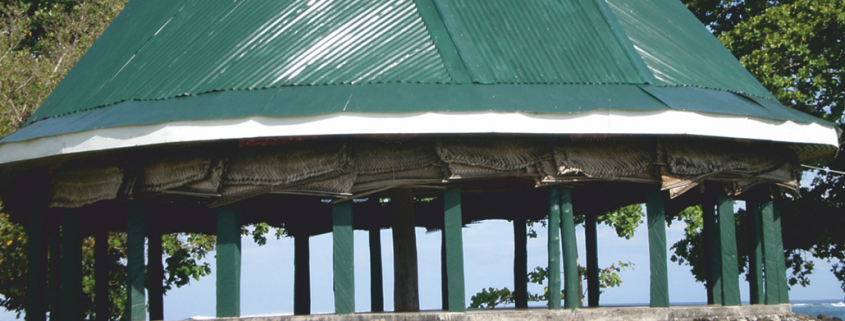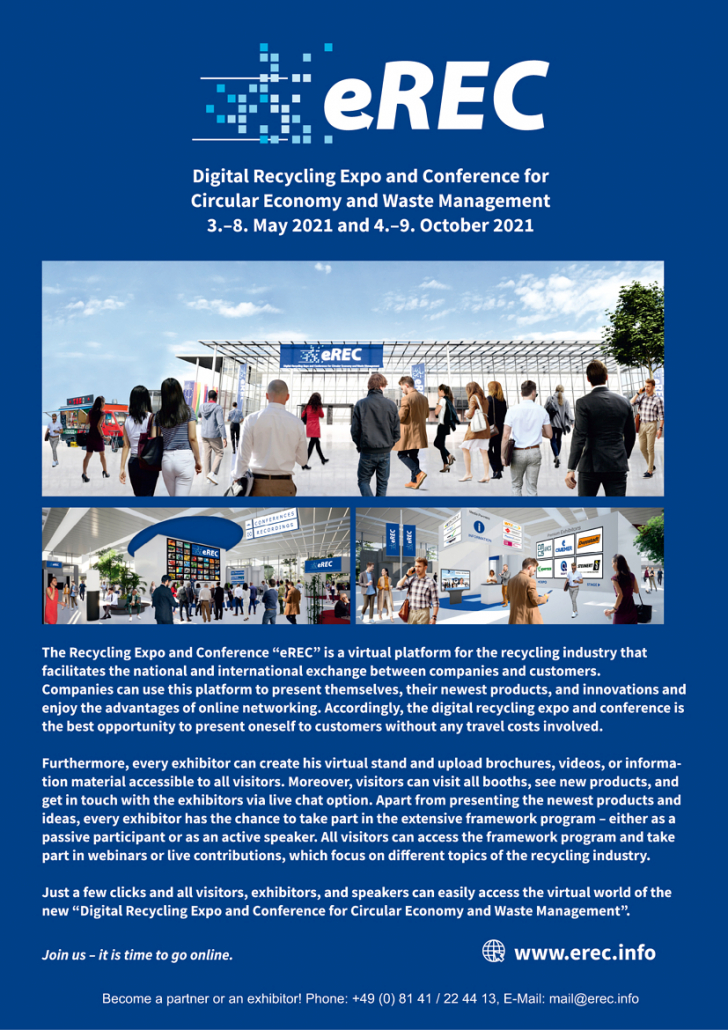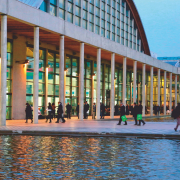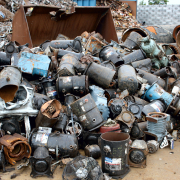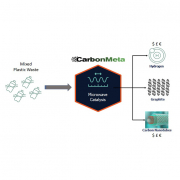Samoa: Circular Economy in Progress
The Independent State of Samoa aims at minimizing the volume of wastes generated on the islands. Moreover, the goal is to divert more materials away from disposal sites with limited capacity.
The Polynesian island country, consisting of two main islands (Savaii and Upolu), two smaller inhabited islands (Manono and Apolima), and several small uninhabited islands, is working on the implementation of the circular economy. In July last year, the Geojournalism website Pasifika Environews reported that the Ministry of Natural Resources and Environment (MNRE) of Samoa – with the support of the European Union’s Pacific-EU Waste Management Programme (PacWastePlus) – has selected electronic-waste (e-waste) as the country’s priority waste stream. At that time, the final stages of the development of the in-country project were announced along with related activities to improve e-waste management at the national level.
As reported, the ministry, with funding and technical support from PacWastePlus (a 64-month project financially endorsed by the EU and implemented by the Secretariat of the Pacific Regional Environment Programme [SPREP] across 14 Pacific island countries and Timor-Leste), would seek to provide safe e-waste collection and dismantling facilities. Furthermore, MNRE would encourage the Samoans “to return e-waste for recycling and reducing e-waste deposited into landfill, illegally dumping and burning of e-waste”. The project would support the Samoan government’s commitments in the Samoa National Waste Management Act 2010 and contribute to the achievement of the National Waste Strategy 2019-2023 on effective implementation of regional and international conventions (Stockholm/Minamata).
More than one year earlier, in March 2019, the country had launched a public-private partnership (PPP) on e-waste. According to the SDG Knowledge Hub, which is managed by the International Institute for Sustainable Development (IISD), MNRE entered into a partnership with the Samoa Stationery and Books (SSAB) and Hewlett Packard Enterprise (HP) in New Zealand to minimize the impacts of e-waste on the islands. Users of HP products can safely dispose of their toners and ink cartridges through a collection and shipping program paid for by HP New Zealand.
That is only one example of the government’s activities. In 2020, a glass crushing pilot was realized; used glass bottles are granulated and will serve as “sand”. As a result of a grant from The Coca-Cola Foundation to the Samoa Recycling and Waste Management Association (SRWMA), plastic bottles for recycling and aluminum cans will also soon be recycled, the newspaper Samoa Observer reported online in November last year. The initiative intends to promote proper waste management practices in collaboration with the National University of Samoa (NUS) and the Australian Pacific Training Coalition (APTC), the NUS homepage informed. The project would aim to provide custom-made segregate waste stations for collection and “promote proper recycling and waste management practices through community engagement marketing strategically targeting consumer behavior change”, which would be carried out by the university. There is also a Samoa Waste Oil Management Program (SWOMP), headed by Nissan Samoa.
Samoa Recycling and Waste Management Association (SRWMA)
Samoa’s ambitions to convert to a circular economy took a step forward with the launch of the Samoa Recycling and Waste Management Association (SRWMA). On this occasion, the Director General of the Secretariat of the Pacific Regional Environment Programme (SPREP), Leota Kosi Latu, applauded the association’s creation as a positive development for the island country. “This is the first of its kind in the Pacific Region and one which other Pacific Island countries can emulate,” he was quoted by the trade magazine The Recycler. The SPREP works with major donors, including the World Bank and the European Union, through the Pacific Regional Infrastructure Facility, to establish recycling hubs around the region. According to Leota Kosi Latu, at that time, Samoa had made tentative recycling steps but had “plenty of progress still to make”. Most of the country’s waste was sent to landfill.
Samoa’s waste generation
According to the figures provided in Samoa’s National Waste Management Strategy (2019-2023), the population of Samoa was 195,843 in 2016; in 2023, the total population is estimated to be 207,075, with an annual population growth rate of 1,605 about persons/year.
The amount of waste generation and the discharged quantity as well as the waste composition were surveyed in November 2017. “The audit was conducted by collecting waste samples from selected 40 households with 365 persons in five villages for one week,” the information said. As a result of the survey, the waste generation amount was identified as 1,060 grams/person/day; the discharged waste volume was 387 grams/person/day.
The country’s quantity disposed of was estimated at 76.4 tons per day in 2017 (2011: 71.4 tons/day). Major waste categories in discharged waste were organic (green waste and food scrap with a share of 43 percent), followed by plastics (16 percent), paper and cardboard (13 percent) and diaper (12 percent).
As described by the Pacific Department of the Asian Development Bank (ADB) in 2014, most households kept wastes on a raised platform, “ready for collection by a waste pickup truck”. The objective of these platforms was to keep scavenging animals away from the waste. That was a major issue in the past. “This unconventional collection system is widely accepted,” ADB gave account. At that time, it was also common for households to compost green waste on their properties and to segregate and use food waste, such as taro and banana peelings, as animal feed. Around five percent of the Samoan households either burned their wastes or dumped them within their property boundaries or vacant areas. Commercial solid waste was stored in a range of steel materials and other containers.
Some years later, improvements were achieved: recycling promotion through the Reduce, Reuse and Recycle (3R HEART) community awareness program; strengthening of landfill operations; and development of a landfill operation training program, the Pacific Region Infrastructure Facility (PRIF) described the situation in 2018. At that time, three recycling operations on the main island of Upolu would source steel and nonferrous scrap from abandoned vehicles and the local landfill and export “approximately 12 x 20-foot shipping containers a month to Australia, the Republic of Korea, and New Zealand”. Whitegoods, PET bottles, paper and cans were exported to Indonesia and New Zealand. Used lead-acid batteries were sent to Fiji, India, New Zealand and Singapore.
There are two approved landfills, Vaiaata (Savaii Island, with an area of 9.8 acres) and Tafaigata (Upolu Island, with an area of 15.4 acres), including related functions or facilities of landfills. As stated, there is no system in place to monitor the remaining capacity and operation. At Tagfaigata landfill, recyclables are separately collected by registered waste pickers and recyclers based within the landfill site and sold. According to the Samoan strategy paper, there is also a composting yard at the landfill “but currently not fully functioning due to lack of staffs with relevant skills”.
The country’s National Waste Management Strategy (2019-2023) has been developed as an integrated waste management strategy to address priority actions to be taken for the years from 2019 onward. Important areas are:
- Enhance environmental awareness of the public on waste-related issues and the countermeasures
- Strengthen operational planning on solid waste management (SWM)
- Implement regular survey for basic SWM data collection
- Study feasibility of future SWM options
- Establish an efficient monitoring system for SWM operation
- Strengthen legal framework and enforcement
- Improve the capacity of officials related to SWM
- Improve chemical and hazardous waste management
Investment promotion
In its terms, the Independent State of Samoa provides a highly favorable investment environment and is committed to creating an attractive investment climate for both local and foreign investors. “The country has displayed great political and economic stability over the last ten years and, with relatively low labor costs, a favorable exchange rate and a well-managed economy,” the Ministry of Commerce, Industry and Labour (MCIL) emphasized on its homepage.
According to the Samoa Investment Guide, there are investment opportunities in the Engineering and the Services sector, including paper recycling and environmental services.
www.mcil.gov.ws/?s=samoa+invest
(Published in GLOBAL RECYCLING Magazine 1/2021, Page 27, Photo: Teinesavaii / wikimedia)

